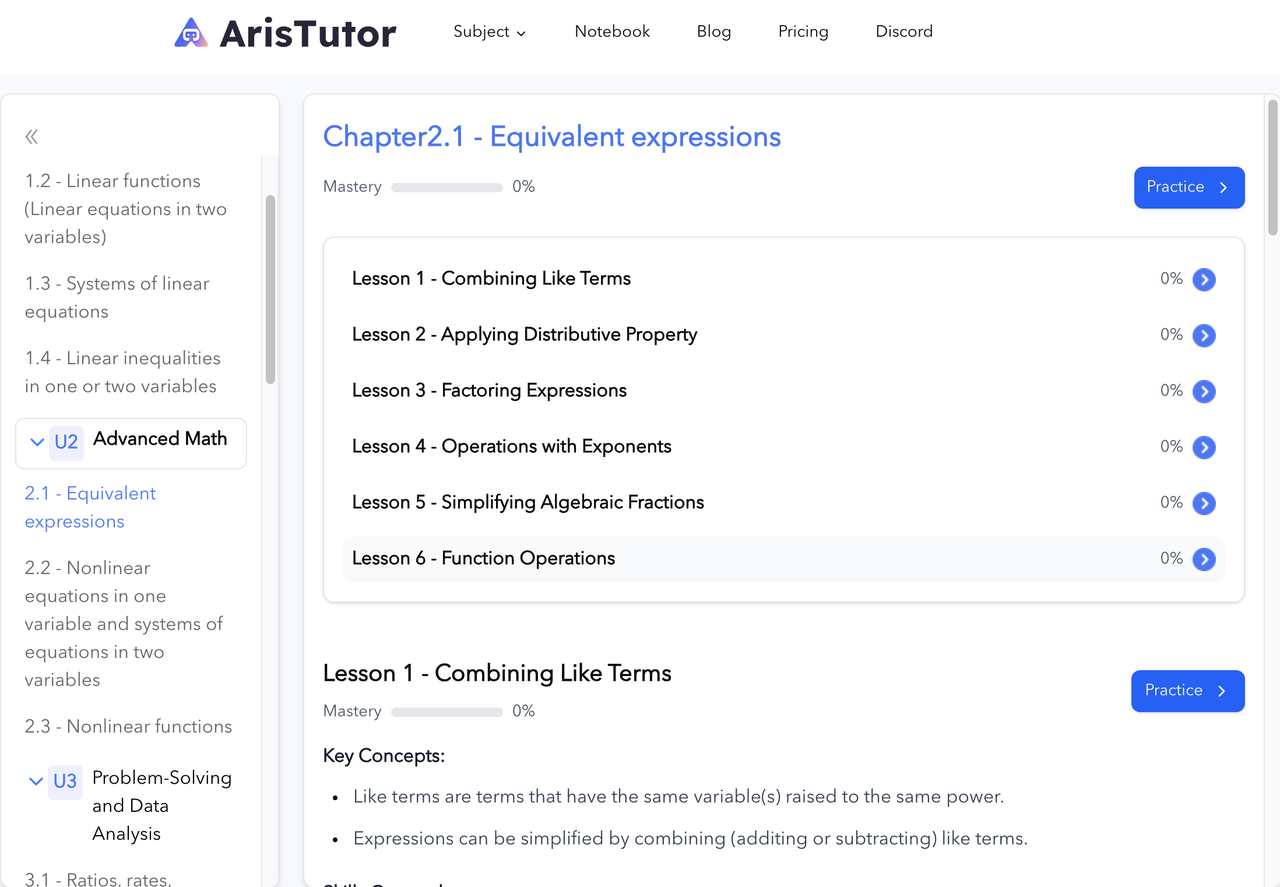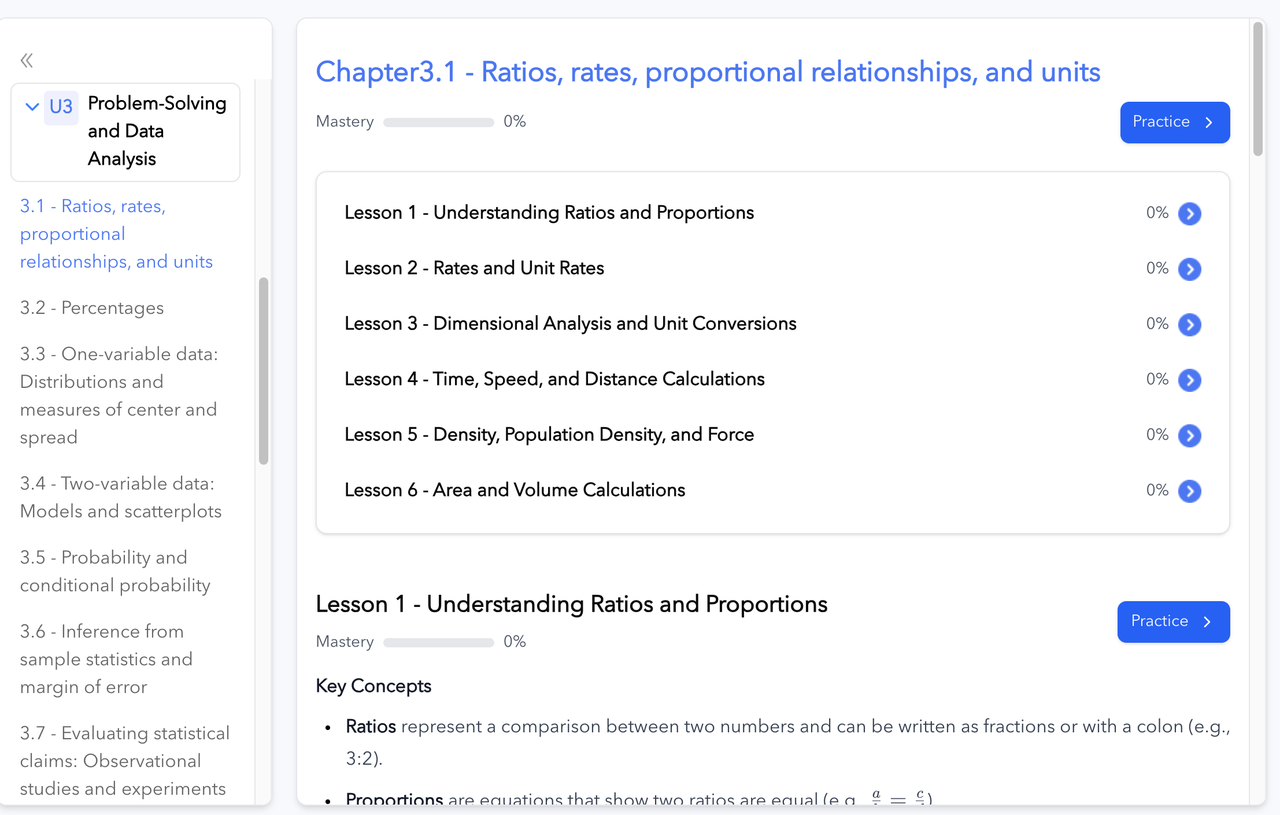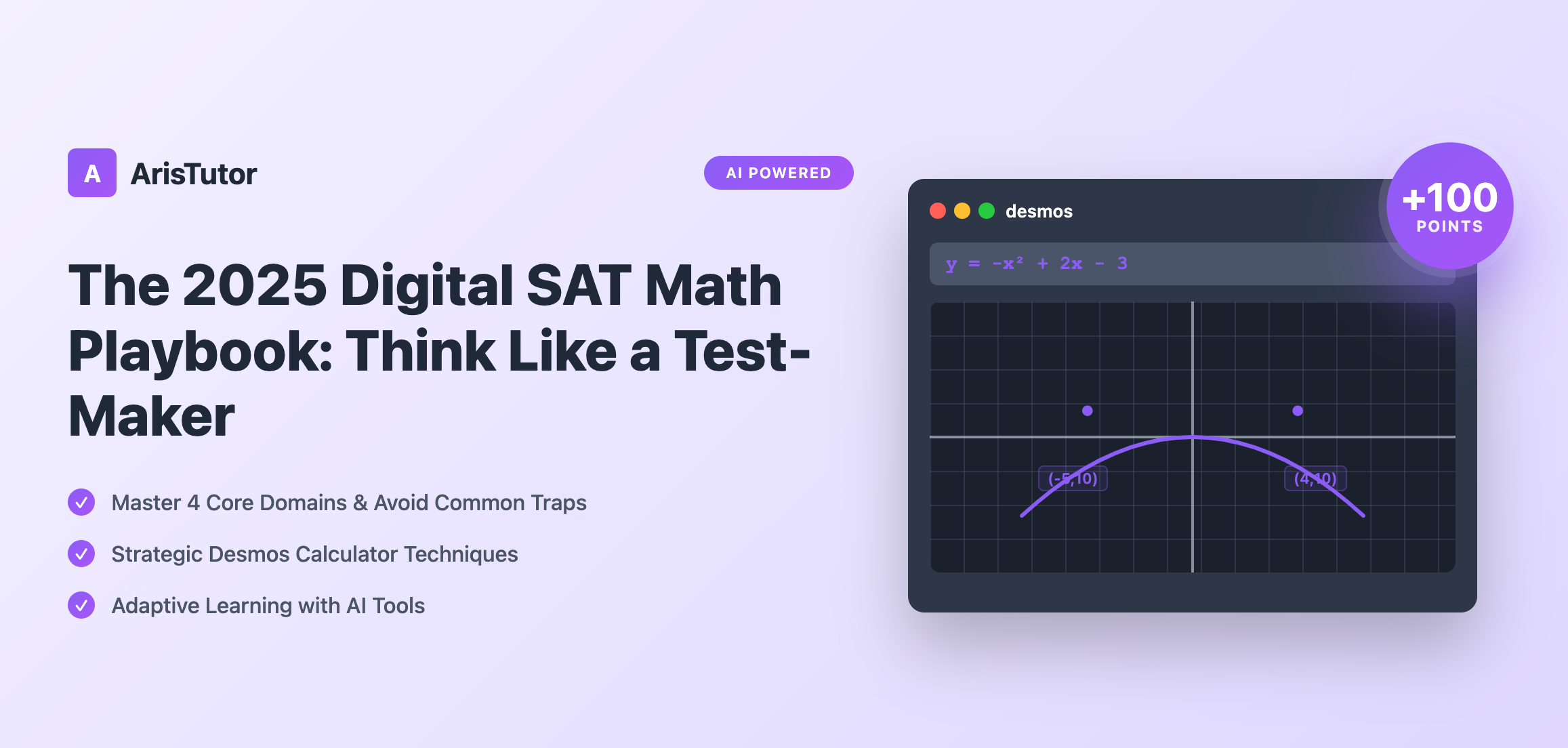Description:
Master the 2025 Digital SAT Math using AI tools and Desmos calculator. Learn expert strategies for all 4 core domains, avoid common traps, and boost your score with adaptive learning
1.Introduction
This is a common question we hear: "sat what is it?" , especially for the Math section.The digital SAT Math section is changing with new tools like Desmos and adaptive testing. Students will face four main types of questions:
- Algebra
- Advanced Math
- Problem-Solving & Data Analysis
- Geometry & Trigonometry
In this playbook, we will show you step-by-step how to think like an expert test-taker. You'll learn proven methods to solve problems quickly and accurately. By the end, you'll understand test structure, content, and problem-solving methods will boost your scores significantly in ways you might not have considered before.
2.Know Your Battlefield: The New Rules & Structure of Digital SAT Math
Pacing is Everything. As noted in the SAT Overview, you’ll face two modules, each with 22 questions to be completed in 35 minutes. This breaks down to approximately 1 minute and 35 seconds per question. Some questions will take you 30 seconds; others might take 3 minutes. Mastering this clock is a skill in itself.
The Digital SAT Math section is a "two-stage adaptive test." Think of it like a video game:
- Module 1: You start with a broad mix of easy, medium, and hard questions. Your performance here determines the difficulty level of questions you'll see in Module 2, which gets much harder.
- Module 2: If you do well in Module 1, you'll get a harder second module with a higher scoring potential. If you struggle, you'll receive an easier module with a lower scoring potential.
Your Secret Weapon: The Desmos Calculator
The SAT now lets you use Desmos, a graphing tool that helps solve math problems visually. Desmos is more than a calculator. We call it a visual problem-solving engine. For any student who understands how to use it, Desmos is a superpower. It can:
- Instantly graph complex functions.
- Find the solutions to a system of equations by identifying points of intersection.
- Visually solve inequalities.
- Test values and model scenarios.
Learning when and how to use Desmos effectively is one of the most important strategies you can develop. We'll talk about how to use Desmos effectively in another article - Boost Your SAT Math Score by 100 Points: Master Desmos Calculator in 2025
3.Master Your Arsenal: A Deep Dive into the 4 Core Content Domains & Their Traps
To do well in SAT math, you need to know four main areas inside and out. Let's look at what makes each area special and where students often make mistakes.
1.Algebra
This domain is the foundation of the SAT Math section, and we usually separate this domain into4 core topics:
- Linear equations in one variable
- Linear functions in two variables
- Systems of linear equations
- Linear inequalities in one or two variables

2.Advanced Math
This section deals with harder equations like quadratics and polynomials. Looking at graphs in Desmos can help you understand how equations work.
- Equivalent expressions
- Nonlinear in one variable and systems of equations in two variables
- Nonlinear functions

3.Problem-Solving & Data Analysis
This section tests your quantitative literacy by asking you to interpret and analyze real-world data.7 core topics
- Ratios, rates, proportional relationships, and units
- Percentages
- One-variable data: Distributions and measures of center and spread
- Two-variable data: Models and scatterplots
- Probability and conditional probability
- Inference from sample statistics and margin of error
- Evaluating statistical claims: Observational studies and experiments

4.Geometry & Trigonometry
While a smaller part of the test, these questions require a solid foundation in spatial reasoning and formula application.4 core topics:
- Area and Volume
- Lines, angles, and triangles
- Right triangles and trigonometry
- Circles

4.The Art of Strategic Problem-Solving in SAT Math
When you start each SAT math problem, first figure out if it's algebra, geometry, data analysis, or advanced math. These simple steps can guide you:
1.Know Your Question Type
⇨ Look for clues quickly (like equations mean algebra, shapes mean geometry)⇨ This helps you pick the right way to solve it
2. The "Desmos First" RuleFor certain question types, Desmos should be your automatic first step. Train yourself to recognize them instantly:⇨ Put the problem into Desmos right away to see it clearly⇨ Look for patterns and check if the graph looks right
2.Try Real Numbers When Stuck
⇨ If you see x's and y's, try putting in actual numbers⇨ Always check your answer by working backward
3.Work Smart, Not Hard
- Do the easy questions first to build up your confidence
- Only move to harder questions when you have extra time
- Keep track of time and questions left
This step-by-step method helps students avoid mistakes and manage their time better. We've helped many students prepare for the SAT, and these tricks really work - especially using Desmos and checking answers with real numbers. Using this organized approach makes the SAT math section feel more like solving puzzles than taking a test.
5.Conclusion & Next Steps: Wrapping Up and Moving Forward
This guide comes from real teaching experience with many students. Learning the topics well and practicing with AI tools will make you better prepared for test day, so take time to review common mistakes in algebra and data analysis, and always use Desmos to check your work.Get ready to practice more.
Use resources like the What Is the SAT? and our practice tools that track your progress. Taking timed practice tests regularly will help you get used to test conditions.Success on SAT math requires both strategy and understanding. Remember to practice with adaptive tools, watch out for common mistakes, and approach each practice question like a test-maker would. Your hard work now will lead to better scores later.
6.FAQ
1.Q: How is the 2025 Digital SAT Math different from previous versions?
A: The 2025 Digital SAT Math features adaptive testing with two modules, integrated Desmos calculator, and performance-based question difficulty.
2.Q: What are the four main content domains in SAT Math?
The main domains are Algebra, Advanced Math, Problem-Solving & Data Analysis, and Geometry & Trigonometry.
3.Q: How can AI tools help improve SAT Math scores?
AI tools provide personalized practice, track progress, identify weak areas, and can help increase scores by up to 20%.
4.Q: How long is each SAT Math module?
Each math module gives students approximately 35 minutes to complete all questions.
5.Q: What's the best strategy for time management in Digital SAT Math?
Start with easier questions first, use Desmos efficiently, and carefully manage time in both modules while paying special attention to early questions.
